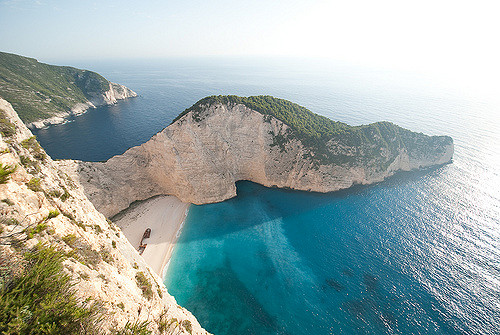The discovery of circular columns and paved floors off the Greek island of Zakynthos generated much excitement worldwide, as it appeared that a long-forgotten, sunken city had been found.
Now, scientists have debunked this notion as they have found these structures to be naturally occurring, a report from CNN states.
A new research in the journal Marine and Petroleum Geology has revealed that what were thought to be man-made columns and floors in the underwater “lost city” were actually created by a geological event that happened some five million years ago.
Julian Andrews, lead author and a professor at the University of East Anglia’s School of Environmental Sciences said, “The suggestion that they were archaeological remains was brought about by tourists who were swimming around and saw these things and thought they were stone work.”
However, Greek officials who initially investigated the site found no evidence that this was indeed an ancient port or city that had sank.
Andrews noted, “Mysteriously [there was] no other signs of life – such as pottery.”
After the first investigation, Andrews and Michael Stamatakis, a professor with the Department of Geology and Geoenvironment at the University of Athens, analysed the mineral content and texture of the underwater structures.
We investigated the site, which is between two and five meters (six and sixteen feet) underwater, and found that it is actually a natural geological occurring phenomenon,
Andrews said.
He further explained that the doughnut and disc-like formations are common in mineralization of hydrocarbon seeps, which are areas of the sea floor where natural gases occur.
“We found that the linear distribution of these doughnut-shaped concretions is likely the result of a sub-surface fault which has not fully ruptured the surface of the sea bed,” he said. “It’s almost like a plumbing situation below the seabed.”
According to the analysis, microbes in the sea floor sediment use the carbon in methane as fuel, which then changes the chemistry of the sediment to create a natural cement, a process known as concretion. The sediment is mostly composed of silt and clay.
“In this case the cement was an unusual mineral called dolomite which rarely forms in seawater, but can be quite common in microbe-rich sediments,” Andrews said.
The structures are a fossil feature from the Pliocene age, which has since been uncovered by underwater currents.
“There’s no active fluid venting at this site, but having said that there are many around the world,” Andrews said. “These gas leaks are quite common, they’re not an unusual phenomenon – the earth’s crust is quite a leaky material.”
There have been similar discoveries worldwide, but most have been found in much deeper waters. The formation process is quite common, but the discovery in shallow waters is unusual.
The “lost city” has been attracting a number of tourists and divers, and Andrews does not think this new information will impact its popularity. “They’re quite beautiful things in their own right and people like to look at bizarre structures,” he said. “They almost act like a reef, so they provide lots of little refuges for fish to live in.”
























